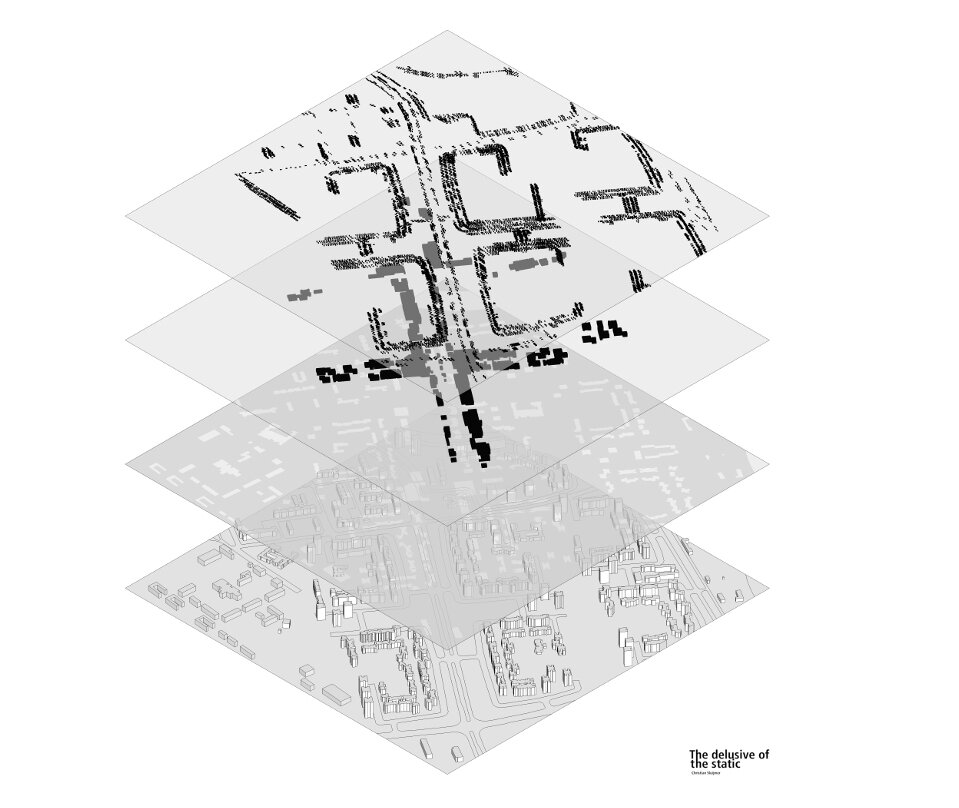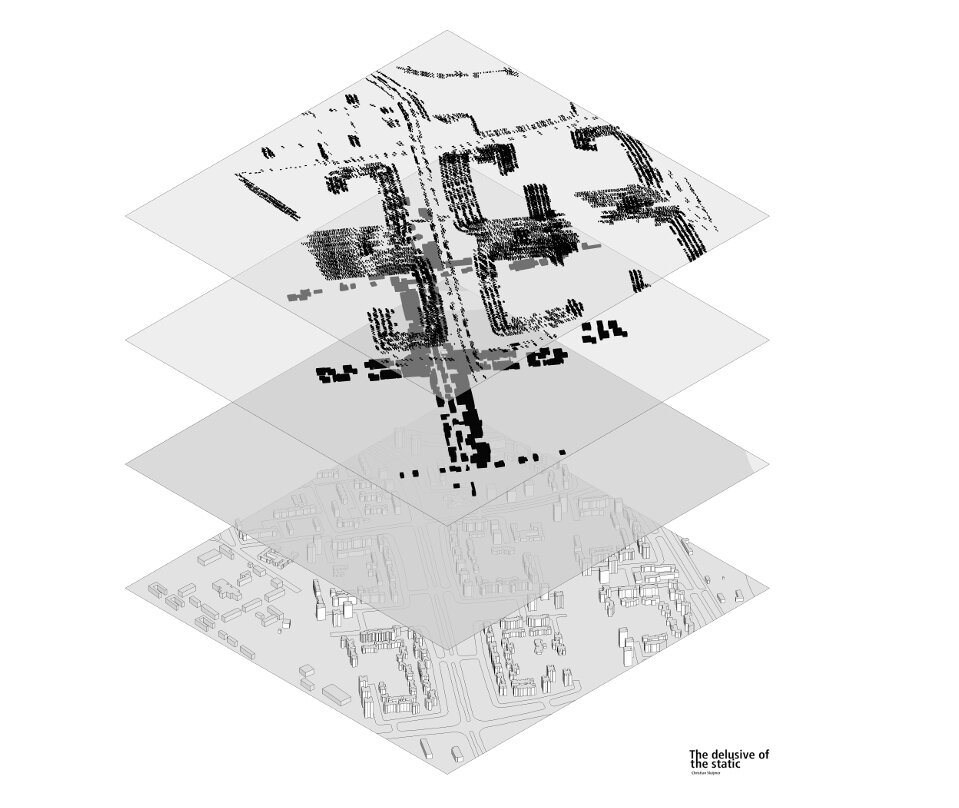The delusive of the static
Student: Christian Sluijmer
Title: The delusive of the static
Semester: 2014 Autumn
Teachers: Klaske Havik
How dynamic processes can be implemented in urban design
How can urban design deal with rapidly changing societies, globalisation, economic growth and decline as well as the impact of climate change on the urban environment? These questions are more relevant than ever before while global warmth is heating the planet, excessive growth of the world’s population, violent religious extremism rises while freedom of speech is under attack. Thus, a major challenge for architecture is present: how can we design solutions for the urban environment that take dynamics successfully into account?
Conventional methods of analysis mostly incorporate past and present of the urban environment, however specific fields among architectural methods do address this challenge. For example, in his book “Urban Flotsam”, Bunschoten, describes a method which a) traces the dynamics in randomly picked locations and b) subsequently develops different scenarios in order to craft long-term viable solutions for urban design. Hence, in this research carried out by Christian Sluijmer, we explored whether this method proves to be of value in developing possible scenarios while incorporating growth in the municipality of Aerodrom in Skopje, capitol of the Republic of Macedonia.
By studying the theory as stated in the book of ‘Urban Flotsam’ and then adapting this theory, we have found an interesting way of analysing the constant dynamics of a site. The ability of the methodology of ‘Urban Flotsam’ is to examine the impact of global trends on local environments and the potential to reveal comprehensive nuances of a site as well as its scientific and social strata. Although it is still impossible to look into the future, the core principle of Bunschotens methodology make it easier to detect ongoing changes in the urban environment, therewith strengthening designs. In sum, we believe that addressing current and future dynamics in urban environments could be of pivotal importance to establish well developed designs. Although the proposed method of Bunschoten lacks specificity, an adapted version proved to be of value in analysing future scenarios for a municipality in Skopje. All in all, we therefore have experienced that architectural value could be strengthened by using methods that address dynamics.


